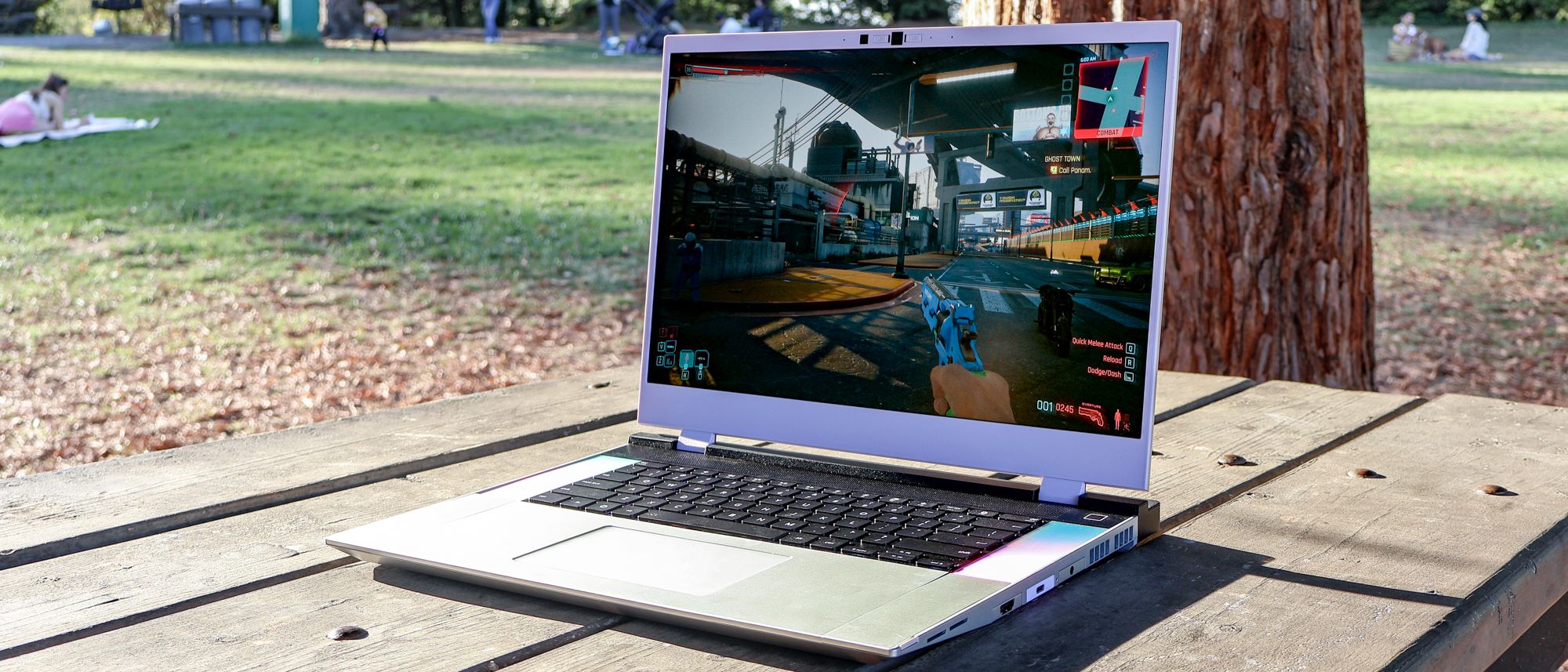Copyright Tom's Guide

The new Framework Laptop 16 (starting at $1,499 DIY, ~$1,856 prebuilt) refreshes one of the best laptops for DIYers with Wi-Fi 7 and an Nvidia GeForce RTX 5070 laptop GPU, making one of my favorite laptops of all time even better. If you're not familiar, the Framework Laptop 16 is a bigger, beefier version of the Framework Laptop 13 ultraportable. Like the smaller 13-inch version, the Framework Laptop 16 is designed to be opened, upgraded and repaired by the owner, and it comes with a free tool for doing just that. You also get a set of Expansion Card slots on the bottom of the Framework Laptop 16 that let you swap out ports as you see fit. Not only that, but the 16-inch Framework also sports a pair of storage bays (so you can have up to two SSDs for storage) and a slot for a detachable GPU module. For a few hundred bucks more, you can buy an attachable AMD Radeon RX 7700S or Nvidia GeForce RTX 5070 laptop GPU from Framework and snap it on for a gaming power boost. After using it as my daily driver for a week or so, I'm convinced this is the best Framework laptop yet and certainly the best gaming laptop Framework has offered to date, thanks in large part to Nvidia's DLSS tech. But there's a lot to dig into with this Framework Laptop 16 (2025) review, so let's dive in! Framework Laptop 16 (2025) review: Specs Framework Laptop 16 (2025) review: Cheat sheet What is it? The biggest and most powerful laptop Framework sells, with six Expansion Card slots as well as an optional detachable GPU shell and room for a second SSD. Who’s it for? Anyone who wants a powerful, highly configurable and customizable laptop that you can open up to modify or repair on your own. What’s the price? You can get a DIY version of the Framework Laptop 16 for as low as $1,499 via Framework's website, but realistically, you'll want to spend closer to $2,000 to get a decent model with all the components you'll need pre-assembled. What do we like about it? I love how configurable, modifiable and repairable the Framework Laptop 16 is, and I love the versatility of the Expansion Card system. What don’t we like about it? The screen is a glare magnet and the performance you get for the price isn't quite on par with what you can get from gaming laptops of this size. Framework Laptop 16 (2025) review: The ups I'm a big fan of a few things about the Framework Laptop 16, and I wanted to quickly highlight them so you know what sets this laptop apart from the rest. The most repairable, upgradable and customizable laptop you can buy This is old news to Framework fans, but if you're not familiar with these laptops, you should know that the Framework Laptop 16 is the most customizable, repairable and upgradable notebook you can buy right now. I say that because, like every laptop Framework sells, the Framework Laptop 16 comes with a free screwdriver/spudger tool you can use to pry apart the laptop to repair or swap out parts yourself. Framework pioneered this design with its original Framework Laptop 13, and it expanded the concept into the Framework Laptop 16 by adding two additional Expansion Card slots (more on those later) and room for a discrete laptop graphics card. I've reviewed just about every model of Framework laptop since they started selling them, and I can tell you that the (dis)assembly process has gotten easier over time. That's important because the cheapest model of Framework laptop is the "DIY version," which comes without RAM, storage, an operating system, or a power cable, so you can then purchase exactly what you need (RAM and storage but no OS if you plan to install Linux, for example) and build it yourself. Framework sent us a "build it yourself" version of the Framework Laptop 16 with all the components packed into separate boxes, and the assembly process was fairly straightforward and took only 15 or so minutes. And while this process is a little terrifying the first few times you complete it, once you do, you can rest assured knowing you're capable of opening your Framework laptop up and swapping out or upgrading components the next time the need arises. No other laptop on the market can match this laptop's versatility, upgradability and repairability, making this my most-recommended notebook for DIYers and folks who value their right to repair. Expansion Cards give you lots of options On top of that—or on the bottom, if you want to be accurate—the Framework Laptop 16 sports six Expansion Card slots on its undercarriage that let you slot in whatever Cards you want. If you're not familiar, you buy Expansion Cards directly from Framework, and each one has a USB-C jack on one end that you use to connect it directly to the laptop by sliding it into one of the six slots on the bottom of the laptop. Each Card comes with either a specific amount of storage (250GB/1TB) or a specific port (USB-A, HDMI out, RJ-45 Ethernet, etc), enabling you to change up your laptop day-to-day based on how your needs change. I love Framework's Expansion Card system because it lets you mix and match the ports on your laptop to perfectly fit the occasion. I can slot in the RJ-45 Ethernet jack and the HDMI out when I want to do some online gaming on a big screen, for example, and then swap those out for an audio jack and extra storage when I want to lug the laptop to the coffee shop to get some work done. DLSS unlocks real gaming potential As much as I liked the original Framework Laptop 16 when I reviewed it last year, I had to admit that it couldn't keep up with dedicated gaming laptops when playing modern games. For 2025, Framework outfitted the Laptop 16 with an optional Nvidia GeForce RTX 5070 laptop GPU in addition to the usual AMD GPU option, and the result is a more capable gaming laptop. Framework sent us a unit with the Nvidia GPU for review, and after using it for a week or two, I have to say that enabling DLSS is a game-changer when gaming on a laptop. By enabling DLSS, I've been able to enjoy playing games like Baldur's Gate 3, Cyberpunk 2077, and Dying Light 2 at 60+ frames per second with graphical settings cranked to high or better. So while I could limp through the latest games on the old Framework Laptop 16 if I was careful with the graphical settings, the new Framework Laptop 16 with Nvidia under the hood feels like a capable gaming laptop in any game that supports DLSS. However, just because it feels like a real gaming laptop doesn't mean it can compete with them. If you look at the result of our game benchmark tests (charted above), you can see that the Alienware 16 Area-51 (which is more expensive and has beefier internals, including an Nvidia GeForce RTX 5080 GPU, Intel Core Ultra 9 CPU, and 32GB of RAM) still runs circles around the 2025 Framework Laptop 16. That said, you can also see that the GeForce RTX 5070 Framework Laptop 16 is a significantly better gaming laptop than last year's Laptop 16 with its AMD Radeon RX 7700S GPU. So while it can't compete with more expensive, less versatile gaming laptops, this is easily the best laptop for gaming that Framework's ever sold. Framework Laptop 16 (2025) review: The downs As fond as I am of the new Framework Laptop 16, there are a few frustrating aspects of its design that I wanted to let you know about before you buy. Dim screen is a glare magnet There are a lot of things I love about the new Framework Laptop 16, but the screen isn't one of them. The 16-inch WQXGA (2560x1600 pixels) 165Hz IPS panel looks perfectly fine indoors, but if you try to use it outside, you're going to catch some glare pretty quickly. Obviously, that's not a huge drawback for most of us, but if you're planning to take this laptop to school or work by a sunny window most of the day, you should be prepared to deal with glare. In fact, during my time with our Framework Laptop 16 (2025) review unit, I couldn't help feeling like the screen had gotten slightly harder to use in bright light than its predecessor. At first, I thought I was imagining things, but after we put the laptop through our battery of display tests, I saw that my eyes didn't deceive me—the new Framework Laptop 16 does indeed seem to have a slightly dimmer screen than its predecessor, as you can see from our chart of test results below. That said, it's not like the laptop is completely unusable outside—it's just hard to see in the sun. When you're in shade or indoors, everything's swell, and since I tend to do most of my gaming indoors anyhow, it wasn't an issue. In fact, under ideal lighting, I think this laptop's 16:10 display is great for working, watching videos and playing games. While I wish it had HDR support, I can't complain about the image quality: colors pop and effects in games like Baldur's Gate 3 and Cyberpunk 2077 look lovely, with no noticeable ghosting or display issues. In fact, based on our lab testing, the Framework Laptop 16's display is quite colorful, managing to achieve 100% of both the sRGB and the more demanding DCI-P3 color gamuts. That's better than its predecessor, which couldn't hit 100% of DCI-P3, but the fact that the Delta-E value has also climbed significantly (from 0.2 to 0.33, when 0 is perfect accuracy) suggests this probably isn't the best laptop for serious photo/video editors. The customizable keyboard deck remains cool but shaky One of the unique design elements that sets the Framework Laptop 16 apart from even its siblings is the customizable keyboard deck. Unlike every other laptop I've ever reviewed, the keyboard on the Framework Laptop 16 can be moved around to make room for other things. You simply plop the keyboard down into the assigned area (it will automatically snap into place) and then slide it all the way to the left or right of the deck to make room for a numberpad or LED module on one side. You buy these modules directly from Framework, just like the Expansion Cards, and you can mix and match them to create a more interesting and unique laptop. However, there is one small downside to this design—it wobbles. That's to be expected given that Framework designed the laptop to be easy for anyone to access, such that all you need to do to start pulling pieces off the keyboard is to pop the two safety latches on either side of the deck. Once you loosen those two latches, the pieces of the keyboard deck become fairly easy to remove by simply sliding them down and off the laptop. I've now done this several times on multiple laptops, and while it's always kind of a thrill, once you get the hang of it, there's little risk of damaging anything. That said, the fact that your keyboard deck is comprised of thin, removable aluminum strips does make it feel a little flimsier than most laptops. I don't think this is any cause for alarm, and I highly doubt the Framework Laptop 16 would break during normal use, but the fact that pieces of the keyboard deck flex and shift under my hands does take some adjustment. Framework Laptop 16 (2025) review: Verdict After spending a week or so with the new Framework Laptop 16, I'm convinced it's an across-the-board upgrade that improves upon what was already my favorite laptop of last year. When I wrote our original Framework Laptop 16 review last year, I called it "the laptop I'd buy for myself," and that's even more true in 2025 now that you can plug in an Nvidia GeForce RTX 5070 laptop GPU module to make use of DLSS when gaming. For me, the Framework Laptop 16 has always been most appealing as a DIY-friendly gaming laptop, so upgrades like Wi-Fi 7 and a better charger are less exciting than the new GPU modules and improved cooling system in the 2025 Laptop 16. But what I really love about the Framework Laptop 16 is that if you already bought one, you don't have to junk it to upgrade—you can just buy the newer, better components direct from Framework and install them yourself! That feature alone makes the Framework Laptop 16 my favorite laptop of the year, and our lab testing proves that upgrades like the new Nvidia GeForce RTX 5070 GPU module make a big difference in gaming performance.



